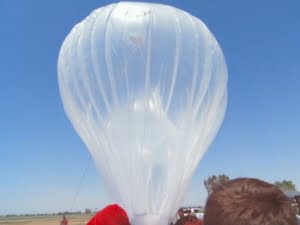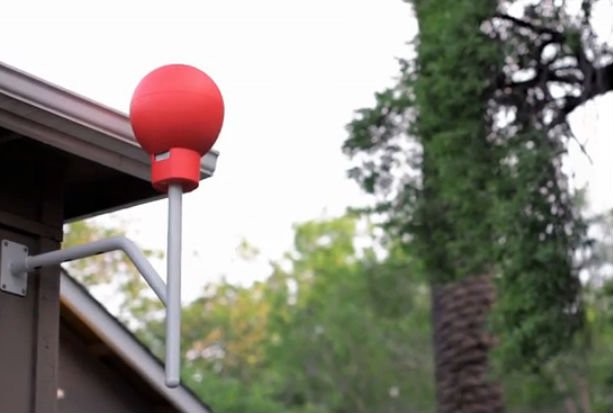 These days when you see something strange flying overhead, you might wonder if it’s a drone.
These days when you see something strange flying overhead, you might wonder if it’s a drone.
But in this case, it’s a “loon,” and it belongs to Google, which thinks the world needs the Internet absolutely everywhere. And you probably won’t see it flying because it will be in the stratosphere, where it can avoid airplanes and bad weather.
How do you bring Internet access to remote areas of the world where coverage doesn’t exist?
Google thinks it has the answer with Project Loon and says, “Two-thirds of the world’s population does not yet have Internet access. Project Loon is a network of balloons traveling on the edge of space, designed to connect people in rural and remote areas, help fill coverage gaps, and bring people back online after disasters.”
Balloons (above) literally would float in the stratosphere, twice as high as airplanes and even the weather. Carried by wind and powered by solar and GPS, they can be steered up or down in altitude toward winds that are moving in the direction Google wants them to go. With a simple Internet antenna attached to a building, people will be able to connect to the balloon network.
Winds 12 miles above the Earth’s surface generally are steady and slow-moving at 5 to 20 miles per hour, Google says. Software algorithms will determine where balloons need to go and coax them into a layer of wind that’s moving in that direction. “By moving with the wind,” says Google, “the balloons can be arranged to form one large communications network.” A signal will bounce from balloon to balloon, then to the global Internet back on Earth.
The balloon is carefully designed to deal with challenging conditions in the stratosphere, such as air pressure that’s 1 percent of that at sea level, temperatures of -50 degrees Celsius, and a thinner atmosphere that doesn’t offer much protection from the sun’s rays.
A box of electronics is carried by the balloon, which contains GPS, sensors, electronics and instruments that monitor the weather. One hundred watts of solar power runs the electronics and keep an on-board battery charged for four hours of use at night.
On June 14, Google’s first balloon launched from New Zealand, and since then 30 balloons have been released. These test flights will be used to refine the technology.
Why don’t they just use satellite technology? “There just isn’t enough satellite spectrum to go around for everybody in the world to do high-speed Internet via satellite,” Tim Tozer from the University of York told National Geographic, “And if you want high data rates, you need large antennae on the ground.” Other limitations include cost, available launch vehicles and orbital slots in an increasingly crowded low-Earth orbit, he added.
This isn’t the first time high altitude balloons have been deployed. The EU’s CAPANINA project successfully delivered wireless broadband from the stratosphere, reports National Geographic.
“I’m very convinced that, ultimately, while it may be very slow going, this is going to work commercially. The idea of unmanned vehicles in the stratosphere excites people. There is a need for the service and a lot of space there — so eventually I think we’re going to use that space,” says Tozer.
Perhaps there’s also a connection with Google’s most recent greentech acquisition: wind turbines that literally fly in the air like a kite on a small airplane.
This article is reprinted with permission from SustainableBusiness.com.


No Comments Yet